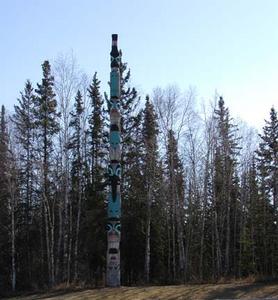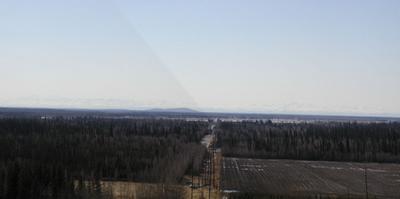3 May, 2002
Today should be my last day in Fairbanks until its time to go home. The Haul
Road (Dalton Highway) is open and it appears that it will be for our stay in
Toolik Lake. Our day today is committed mostly to packing the lab
equipment for the trip to Toolik. The road is so rough that
everything must be well padded and protected from the bumping and
jostling we will get on the drive. Anything and everything that we
might need in Toolik must be boxed and carried with us.
Almost nothing is left at the research camp during the winter. The Dalton
Highway is the only way to reach Toolik Lake other than by bush plane and
since the bush planes have a very limited cargo room, anything with any size
must be taken up by truck. The importance of this situation is that heating
fuel and fuel for the generators can be in very short supply over the winter.
To conserve fuel all labs and non-essential buildings are completely shut
down over the winter.
In the few lab tests we've been able to do today, we did find that our
experimental procedures had a minor flaw. We have been trying to check the
freezing points of the Cucujus and the centipedes by freezing them on a bed
of pre-made ice. Unfortunately we were making the ice bed in a super sub-zero
freezer that gets as cold as -800 degrees Celcius. Consequently, the
ice bed we were putting the critters on was already near 20 below
zero. We discovered this problem as we watched centipedes freeze as
soon as we put them into the tubes. The result . . . we were
cold-shocking the centipedes rather than actually testing their
tolerance to freezing. A lesson learned; that research and research
methods are often far from perfect.
During one short break today I had the opportunity to visit some spots on the
University of Alaska-Fairbanks campus. There is a rich cultural history on
this campus as well as an extensive science and technology program. I have
been impressed with both the faculty here and many of the facilities. The
photos in today's entry are all from locations on or near the UAF campus.
Lastly today I wanted to introduce you to one of the leaders of our crew, Dr.
Jack Duman of the University of Notre Dame. Dr. Duman is the chairman of the
biology department and has been researching cold tolerance in animals and
anti-freeze proteins for quite some time. Jack is original from Pennsylvania
and earned his Bachelor's degree at Penn State. From there he went on to do
his graduate work at the Scripps Institute in San Diego. Jack is now a
regular fixture on the UAF campus as well as Notre Dame and is one of the
world's leaders in anti-freeze protein research.
I do not now when I will be able to send my next journal entry. The
communications at Toolik are still questionable and we won't know what we
have to work with until we get there. So until then, I hope you enjoy the
photos.

This is one of two large totems on the UAF campus.

This is the second large totem.

I know this is just a fire hydrant, but if you look more closely you can see a red and white pole attached to the hydrant. Why do you think that pole might be there?

This is the view from the UAF campus over the city of Fairbanks. In the distance you can faintly see the mountains of the Alaskan Range. On a good day you can see Mt. McKinley from here.
Contact the TEA in the field at
.
If you cannot connect through your browser, copy the
TEA's e-mail address in the "To:" line of
your favorite e-mail package.
|
